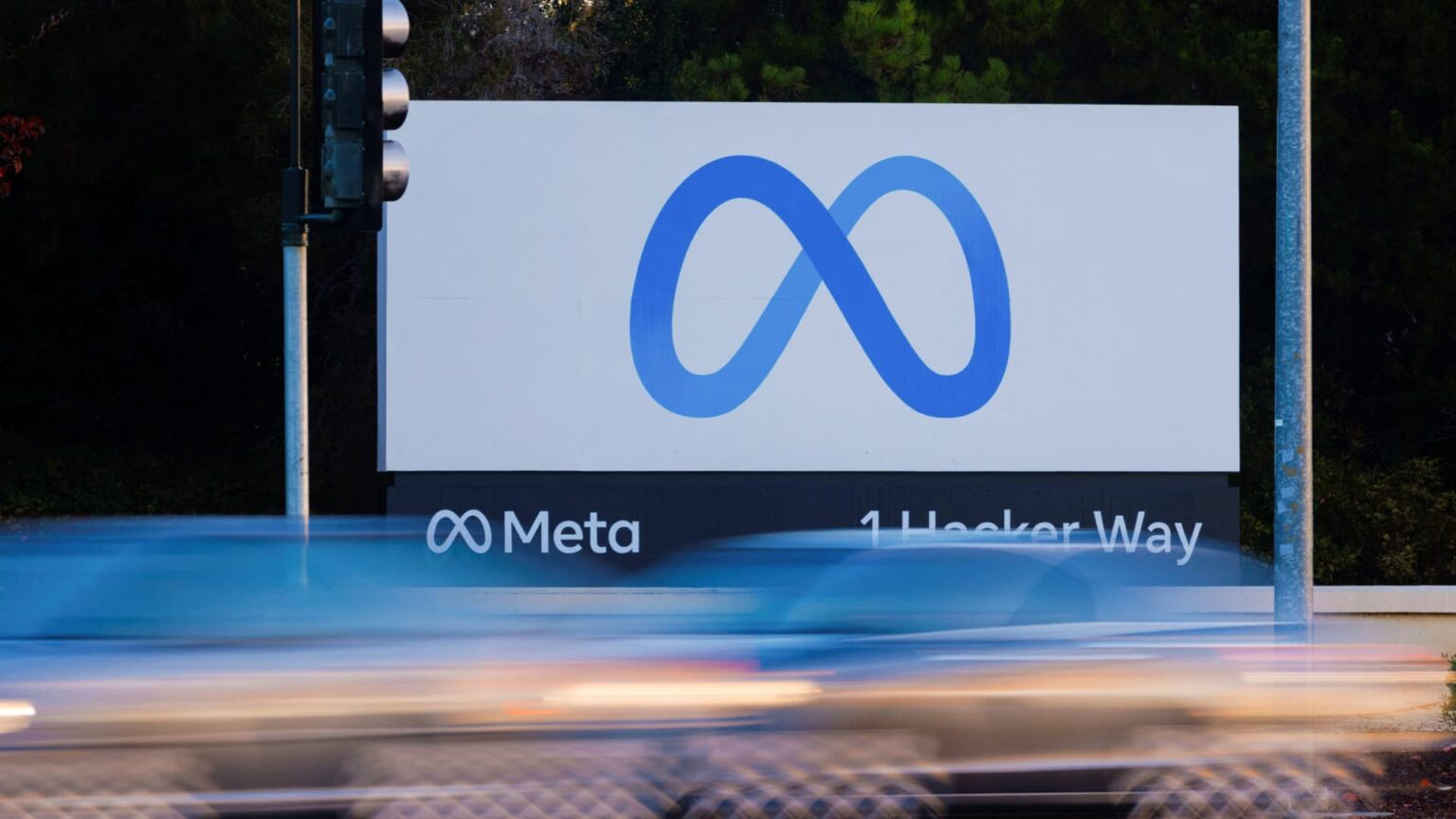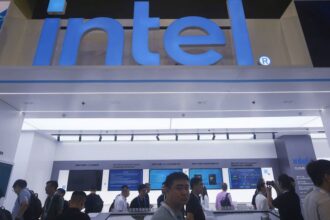As the second quarter begins, we’re taking stock of the AI trade. While returns in 2024 have been strong, we think there is still room to run. Two reasons are behind our conviction: artificial intelligence adoption remains in the early innings, and companies are still researching and figuring out the potential use cases of AI and how to make money on them. Jefferies said a note this week that 2024 is a transition year from “dreaming of gen AI’s potential” in 2023 to this year’s implementation and monetization, and a look ahead to creating new products that can ramp up in 2025. The analysts said Microsoft and Amazon are best positioned for enterprise adoption, and Meta Platforms and Alphabet are uniquely geared to serve consumer needs. In their view, Microsoft, thanks to its investment in ChatGPT startup OpenAI, is the clear leader given its positioning on the infrastructure side with its Azure cloud and its early move into product offerings with Copilot AI assistants. Alphabet, on the other hand, was designated as the “most underrated,” by the Jefferies analysts, a designation we agree with despite our decision to trim some shares Monday morning. Microsoft leads There’s no denying Microsoft’s execution, which paved the way for generative AI to go mainstream and the company to then make money from the emerging technology. It has been unmatched. Microsoft was quick to realize the power of OpenAI, making its initial investment in 2019 and subsequent ones in 2021 and 2023 . OpenAI’s ChatGPT launched in late 2022 and went viral shortly after that — launching the current wave of investor interest in AI and the companies whose stocks can benefit from it. MSFT 5Y mountain Microsoft 5 years Google is not out As for Alphabet, there are still concerns about the company’s ability to maintain Search dominance and management’s ability to effectively execute following a series of missteps that have understandably led to some skepticism regarding its ability to lead in AI. However, we think it’s wrong to count the Google parent out. Alphabet may have messed up by letting Microsoft leap ahead on generative AI, but the company has years of experience in artificial intelligence research. Much of what we are seeing today, with products like Google’s Gemini and ChatGPT, wouldn’t be possible without the research conducted by Alphabet over the past decade. In fact, the transformer architecture , on which ChatGPT was built, was developed by Google researchers and introduced in 2017. Google is also rapidly pushing into the cloud and has a treasure trove of consumer data that will prove crucial to refining its models and AI products over time. GOOGL 5Y mountain Alphabet 5 years Given a roughly 15% rebound since the stock bottomed in the beginning of March, we had to let some go. However, considering the combination of data, talent, and financial firepower at Alphabet’s disposal, we think it would be wrong to remove all exposure, especially at less than 23 times 2024 earnings estimates. Thus, our decision, conveyed in Monday morning’s trade, to keep 545 shares of Alphabet following the trim. The stock went on to make a 52-week high on the first day of April. We should also acknowledge the recent news that Apple may be looking to tap Google as a partner for its own AI ambitions. Though Apple has certainly implemented forms of artificial intelligence into its products over the years, it has yet to announce any major update in terms of working in the new form of generative AI. A partnership with Alphabet would certainly prove positive for both companies. Whether they do decide to partner with Alphabet or keep development in-house, remains to be seen, however, we do expect to hear something regarding generative AI when Apple hosts its annual Worldwide Developers Conference in June. Alphabet’s Gemini Nano seems like a viable option for Apple given it’s designed to be used for on-device tasks, meaning it doesn’t rely on sending data back to the cloud, a data handling practice Apple has leveraged in the past to help to ensure user privacy. Apple notes for example that “Face ID data doesn’t leave your device and is never backed up to iCloud or anywhere else.” That’s different from Siri. Those queries do go back to the cloud and then render on the device rather seamlessly. It’s the reason Face ID can work without a mobile or internet connection and Siri can’t. Amazon hedges its bets Turning to Amazon, the latest update on the company’s AI ambitions came last week with the announcement of a $2.75 billion investment into AI startup Anthropic, the largest investment to date by the e-commerce and cloud computing heavyweight. That alone should tell you just how big these companies are betting that generative AI will indeed be transformative — on par with smartphones or the internet itself. Back in September, Amazon put $1.25 billion into Anthropic, bringing its total committed to $4 billion. Anthropic is the company behind the highly regarded Claude large language model (LLM). As reported by the CNBC tech team , the latest edition, Claude 3 “outperformed OpenAI’s GPT-4 and Google’s Gemini Ultra on industry benchmark tests, such as undergraduate-level knowledge, graduate-level reasoning, and basic mathematics.” Notably, Amazon isn’t relying on Anthropic for its generative AI ambitions, if anything, the investment seems like a way to diversify or hedge its bet on its own LLM, codename Olympus, which is expected to debut later this year. The combination of cost optimization on the e-commerce side, a rebound in cloud spending in IT budgets, and the potential for new revenue streams resulting from generative AI, point to further upside ahead. That’s not even to mention what Amazon is doing to increase streaming revenues , in the form of more ad-supported Prime Video and sports rights, and its push into health care, highlighted by its recent announcement of same-day delivery on medications for common conditions. AMZN 5Y mountain Amazon 5 years Amazon is the most expensive of the mega caps at 43 times 2024 earnings. Amazon has never been “cheap” based on earnings, but the current valuation is a fairly steep discount to the 62 times five-year historical average. Looking out to 2025 earnings estimates, Amazon’s valuation drops to 33 times. The analysts at Jefferies called Amazon out for its position in the enterprise, a call we fully understand given the company’s public cloud leadership. However, given its dominance in e-commerce and all the data it can glean from consumer shopping habits, we must acknowledge the massive consumer opportunity the company also has when it comes to generative AI implementation. Amazon shares hit a 52-week high on the first day of April. Meta plays to strengths Meta Platforms is a consumer AI play. The company’s focus on cost-cutting where it can along with AI investments where appropriate have been paying off massively for the stock. Not only is user engagement up but the implementation of AI is resulting in an increased return on investment (ROI) for advertisers. Moreover, Meta’s decision to make its LLaMa models open-source should help with the implementation of new tools over time. It may not be as clear or direct as the monetization at Microsoft, but Meta Platforms is benefiting financially from its AI efforts. META 5Y mountain Meta Platforms 5 years At just over 24 times 2024 earnings estimates, we think Meta has plenty of upside left given its ability to drive best-in-class advertiser ROI and management’s hyperfocus on keeping costs in check. As for TikTok, though we think Meta can win regardless of what happens to the Chinese-owned short video platform in the U.S. market, anything that reduces usage of ByteDance’s TikTok should provide a direct boost to Facebook and Instagram Reels engagement. That’s especially true in an election year. Despite the issues politicians may or may not have with Meta’s family of apps, the offering remains the best possible way to reach potential voters. (Jim Cramer’s Charitable Trust is long MSFT, GOOGL, AMZN, AAPL, META. See here for a full list of the stocks.) As a subscriber to the CNBC Investing Club with Jim Cramer, you will receive a trade alert before Jim makes a trade. Jim waits 45 minutes after sending a trade alert before buying or selling a stock in his charitable trust’s portfolio. If Jim has talked about a stock on CNBC TV, he waits 72 hours after issuing the trade alert before executing the trade. THE ABOVE INVESTING CLUB INFORMATION IS SUBJECT TO OUR TERMS AND CONDITIONS AND PRIVACY POLICY , TOGETHER WITH OUR DISCLAIMER . NO FIDUCIARY OBLIGATION OR DUTY EXISTS, OR IS CREATED, BY VIRTUE OF YOUR RECEIPT OF ANY INFORMATION PROVIDED IN CONNECTION WITH THE INVESTING CLUB. NO SPECIFIC OUTCOME OR PROFIT IS GUARANTEED.
As the second quarter begins, we’re taking stock of the AI trade. While returns in 2024 have been strong, we think there is still room to run. Two reasons are behind our conviction: artificial intelligence adoption remains in the early innings, and companies are still researching and figuring out the potential use cases of AI and how to make money on them.
Read the full article here










